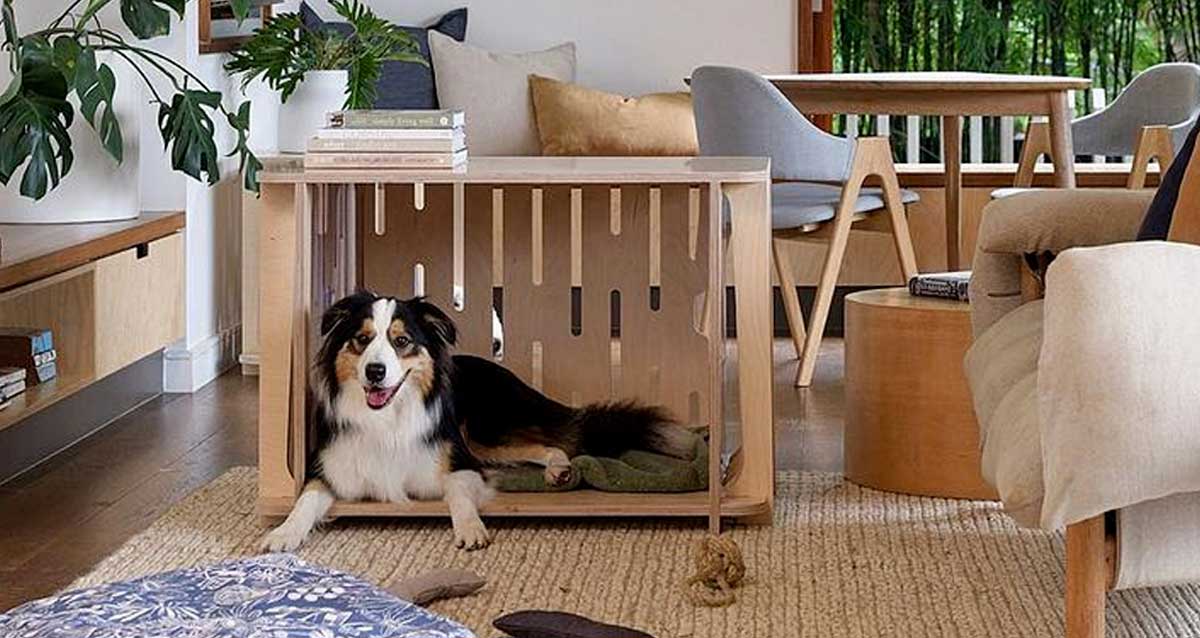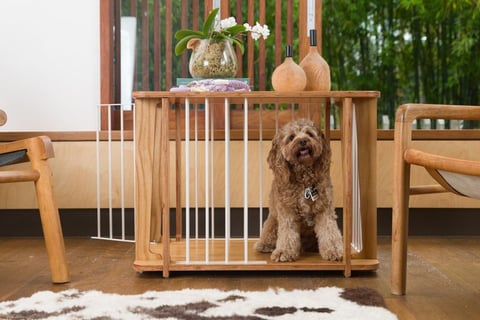5 Tips to Crate Train Your Dog Like a Pro!
Crate training your dog can seem like a daunting task, but it doesn’t have to be. When we first met with trainer Jo Brooks from SOS Dogs Australia about crate training our Shar Pei, Paolo, we were a little resistant to the idea. We were also more than a little sceptical when she told us that when we’d say “mat”, he’d go into the open crate and be perfectly comfortable and happy to stay there. Of course we could hardly believe it when this turned out to be true, and to this day Paolo chooses his crate as his safe space to self soothe and relax! We went on to start The Paws Room to support the use of crates as a sanctuary for dogs - because as Jo says...
“Crate trained dogs are some of the happiest dogs I’ve seen. They are natural den animals so love to seek out spaces like this, and it's why some dogs like to get under coffee tables or beds. Feeling safe in a crate comes very naturally to dogs.”
With the right guidance from experienced trainers like Jo, you can make crate training your pup a breeze too. Here’s what 5 professional dog trainers have shared with us.

Why crate train?
Laura Godwin from Doggi Dog Day Care Paddington believes that crate training your dog is one of the most beneficial things you can do for them, particularly considering that dogs instinctively look for a safe and secure space to rest. Using a crate also helps to toilet train your dog, prevents separation anxiety from developing, and allows them to build up their confidence away from you, and in their own space. Having a crate trained dog will also make their experience at the vet and groomers less stressful. "Crates are something that should be used for their whole life. They will love you for providing them with their own sanctuary.”
Crate size matters
When it comes to deciding on crate size, Cam McKinnon from K9 Training Brisbane stresses how important it is that you get this right. The crate should be just big enough for them to stand up and turn around comfortably. If it is too small it could cause unnecessary stress and discomfort - which defeats the purpose of having the crate in the first place! On the other hand, it's important to note that if you purchase a large size when they are young, make sure there are dividers so that they don’t toilet inside as this can happen if there is too much space.
Go slow
Justin Palazzo-Orr (Happy Paws Happy Hearts) sees many benefits to crate training a dog - whether it's a puppy or a recently adopted dog. It helps them establish a safe place they can go to, and somewhere familiar to get away from people or other animals when they need space and time to settle in. Justins advice when you start introducing the crate, is to make the crate the best place in the world for your dog. Don’t force them into the crate - this is one of the worst things you can do. Justin suggests using treats to lure them to the crate and giving a treat every time they take steps towards and into the crate. "The great thing about The Paws Room crates is that you can give treats from the sides when they go in and reward them for staying in. You can also remove the doors and sides of The Paws Room crates while you train your dog to love it and gradually get them used to being inside.”
.jpg)
Happy Paws Happy Hearts, Justin Palazzo-Orr is a strong advocate for crating dogs
Dog crates aren't just for puppies and can work long term
Cam McKinnon is also a fan of The Paws Room crates because people are more likely to keep using them if they fit in with everyday human life too. "Traditionally, crates - let’s be honest - are quite stark and industrial. They just don’t fit in your living room. With The Paws Room crates, you can have a safe space for your dog that blends into your home. I recommend crates for dogs of all ages, and if you have a beautifully designed crate that also works as a coffee table, it’s easier to think of it as something you’ll keep well beyond the early days of crate training a puppy. Cam McKinnon, K9 Training Brisbane | Dog Behavior Specialist
Crate training doesn't have to be difficult—with these tips from experienced trainers, you'll have your pup happily settled into their new happy space at your place in no time! Remember; choose the right size, go slow with introductions, make sure it's cozy inside, and take advantage of its dual functionality! With these tips under your belt, and please watch these great videos below - you'll be well on your way towards successful - and easy - and easy crate training!
Why Crate Train a Puppy? Interview with Cam McKinnon
Crate training - benefits and tips - Justin Palazzo-Orr



